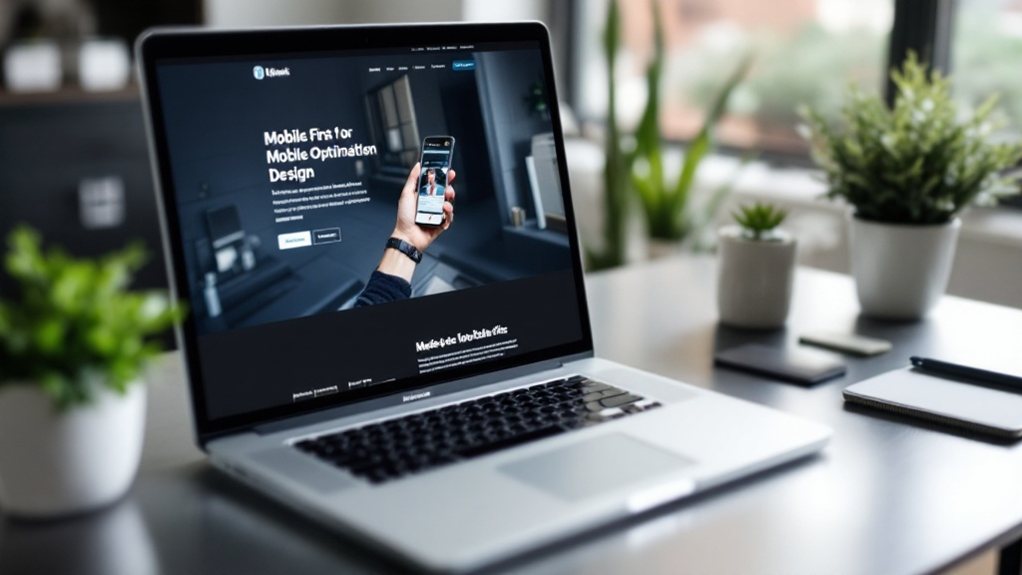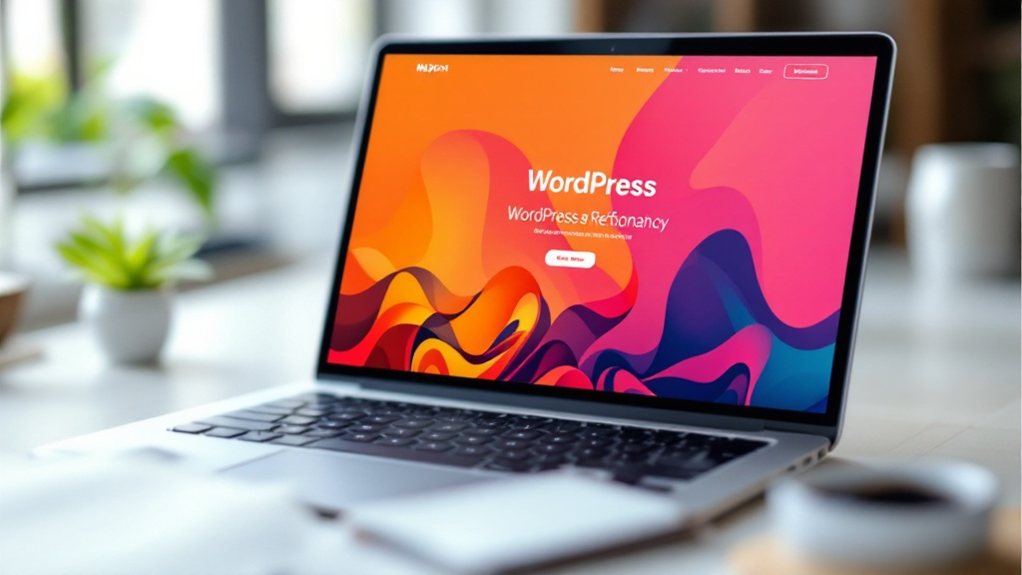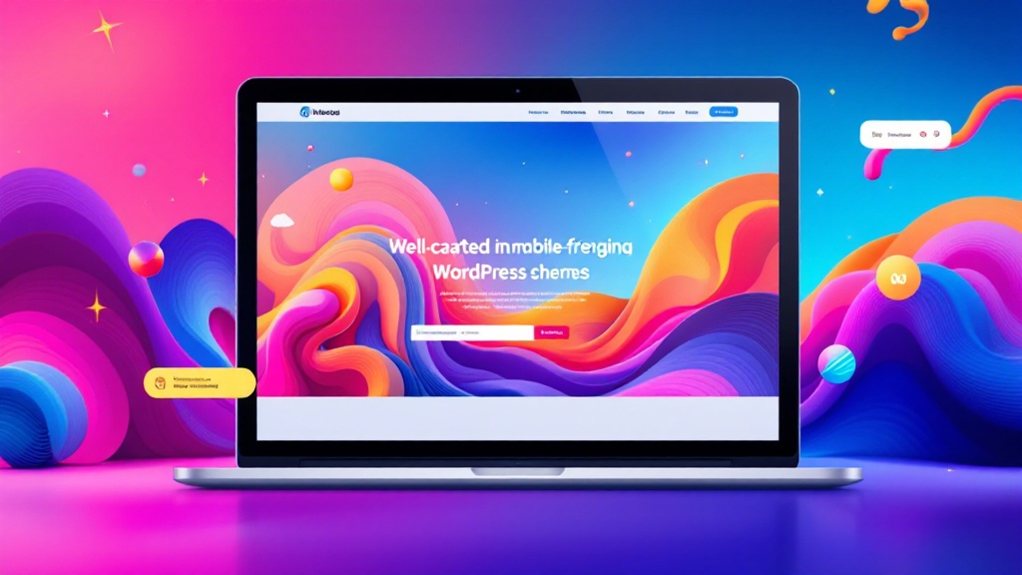To create a seamless mobile-friendly WordPress website, adopt a mobile-first mindset. Leverage responsive design for seamless adaptation across devices. Optimize media to load quickly on mobile. Simplify navigation for effortless exploration. Utilize mobile-friendly plugins and themes. Follow these five vital tips, and you'll deliver a superior user experience that keeps visitors engaged. Explore further to uncover the details behind each of these essentials for building a mobile-optimized WordPress site.
Key Takeaways
- Adopt a mobile-first approach when designing content and layout to ensure seamless adaptation across devices.
- Leverage responsive web design techniques using flexible grids, fluid images, and CSS3 media queries for optimal performance on mobile.
- Optimize website assets, such as images and videos, to load quickly on mobile devices and enhance the user experience.
- Organize the website's navigation structure logically and implement intuitive design elements for effortless mobile exploration.
- Utilize mobile-friendly WordPress plugins and themes that prioritize responsive design, fast loading times, and touch-friendly interactions.
Optimize for Mobile-First Design

As the mobile-first approach continues to dominate web design, optimizing your WordPress website for mobile devices has become paramount. Adopt a mobile-first mindset, designing your content and layout with smaller screens in mind. Leverage responsive design techniques to ensure your website seamlessly adapts to various device sizes. Optimize images, videos, and other media to load quickly on mobile, reducing bounce rates. Additionally, simplify navigation and user interactions, making it effortless for visitors to explore your site on the go. By prioritizing mobile optimization, you'll deliver a superior experience that engages and retains your audience, regardless of the device they use to access your WordPress website.
Leverage Responsive Web Design Principles
Responsive web design principles are key to ensuring your WordPress website seamlessly adapts to various screen sizes. By leveraging techniques like flexible grids, fluid images, and media queries, you can create a website that provides an optimal viewing and interaction experience across devices. Embrace a mobile-first mindset, designing for the smallest screens first and then progressively enhancing for larger displays. Utilize CSS3 media queries to apply different styles based on device characteristics, and ensure your content, layout, and functionality seamlessly adjust. Responsive web design enables you to future-proof your WordPress site, delivering a consistent user experience regardless of how your audience accesses your content.
Ensure Fast Page Load Times

While responsive web design principles are crucial, you must also ensure your WordPress site loads quickly. Page speed is a key factor in user experience and search engine optimization. Optimize your images, minify CSS and JavaScript, enable browser caching, and leverage a content delivery network. Avoid oversized files, unoptimized plugins, and unnecessary scripts. Use tools like Google PageSpeed Insights to identify and address performance bottlenecks. A fast-loading site will keep visitors engaged and improve your search rankings. Remember, every second counts when it comes to retaining users and driving conversions on your mobile-friendly WordPress website.
Enhance User Experience With Intuitive Navigation
To enhance the user experience, ensure your WordPress site's navigation is intuitive and seamless. Organize your menu structure logically, making it easy for visitors to find what they're looking for. Use clear, concise labels that accurately describe the page content. Implement responsive design, so the navigation adapts seamlessly across devices. Leverage drop-down menus and sticky headers to provide quick access to key sections. Incorporate intuitive search functionality, allowing users to quickly locate specific information. Test your navigation thoroughly, gathering feedback to identify and address any pain points. By prioritizing an exceptional navigational experience, you'll keep visitors engaged and encourage them to explore your site further.
Utilize Mobile-Friendly Plugins and Themes

When designing a mobile-friendly WordPress website, utilizing plugins and themes specifically optimized for mobile devices is crucial. These mobile-friendly solutions ensure your site's layout, navigation, and content adapt seamlessly to various screen sizes, providing users with an exceptional experience. From responsive design and touch-friendly interactions to fast loading times and streamlined functionality, mobile-centric plugins and themes elevate your site's performance. Leverage the power of these tools to enhance your WordPress presence, engaging visitors and driving conversions on any device. By prioritizing mobile-friendly elements, you'll create a cohesive, user-friendly website that caters to the growing number of mobile users.

